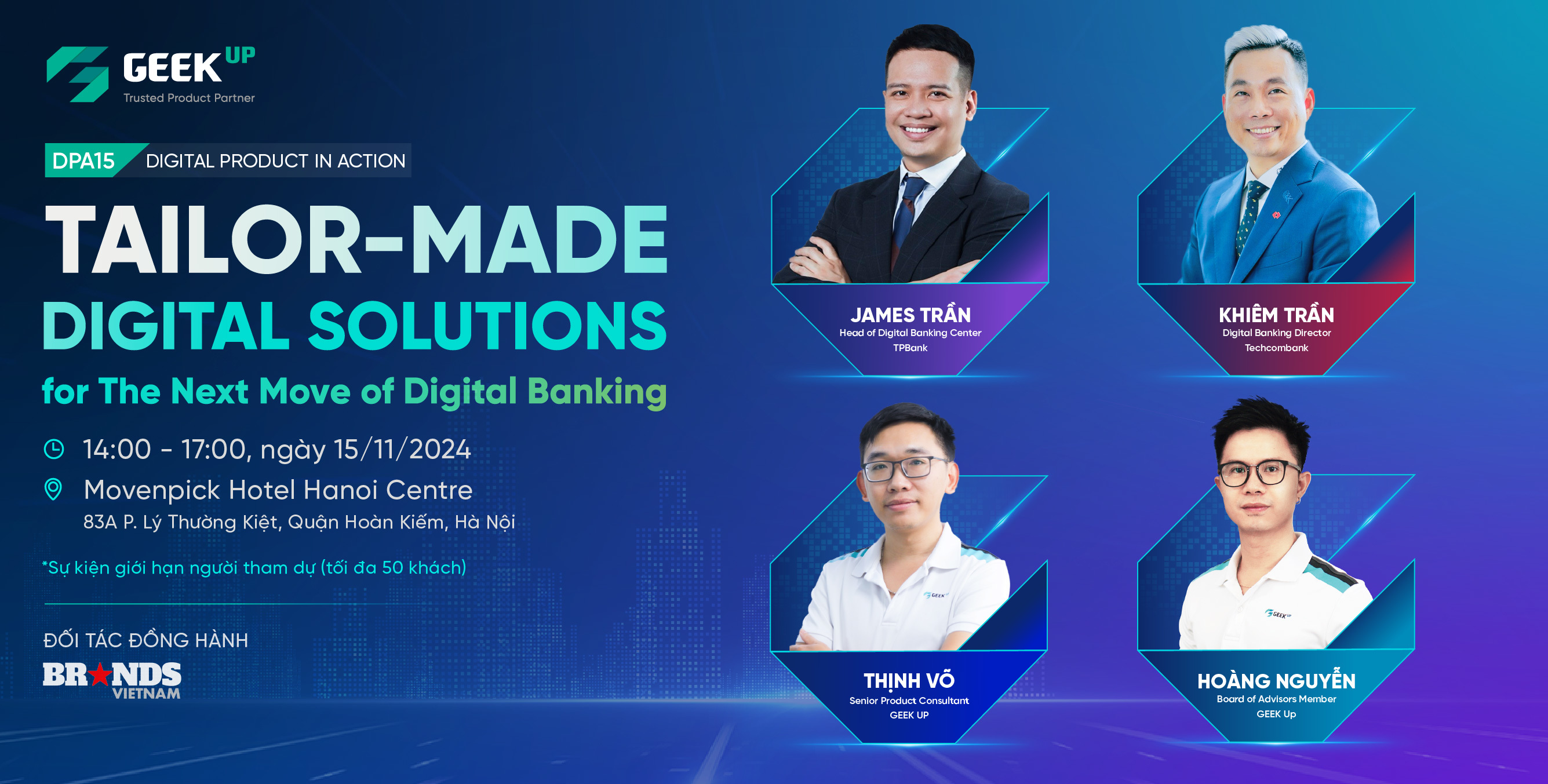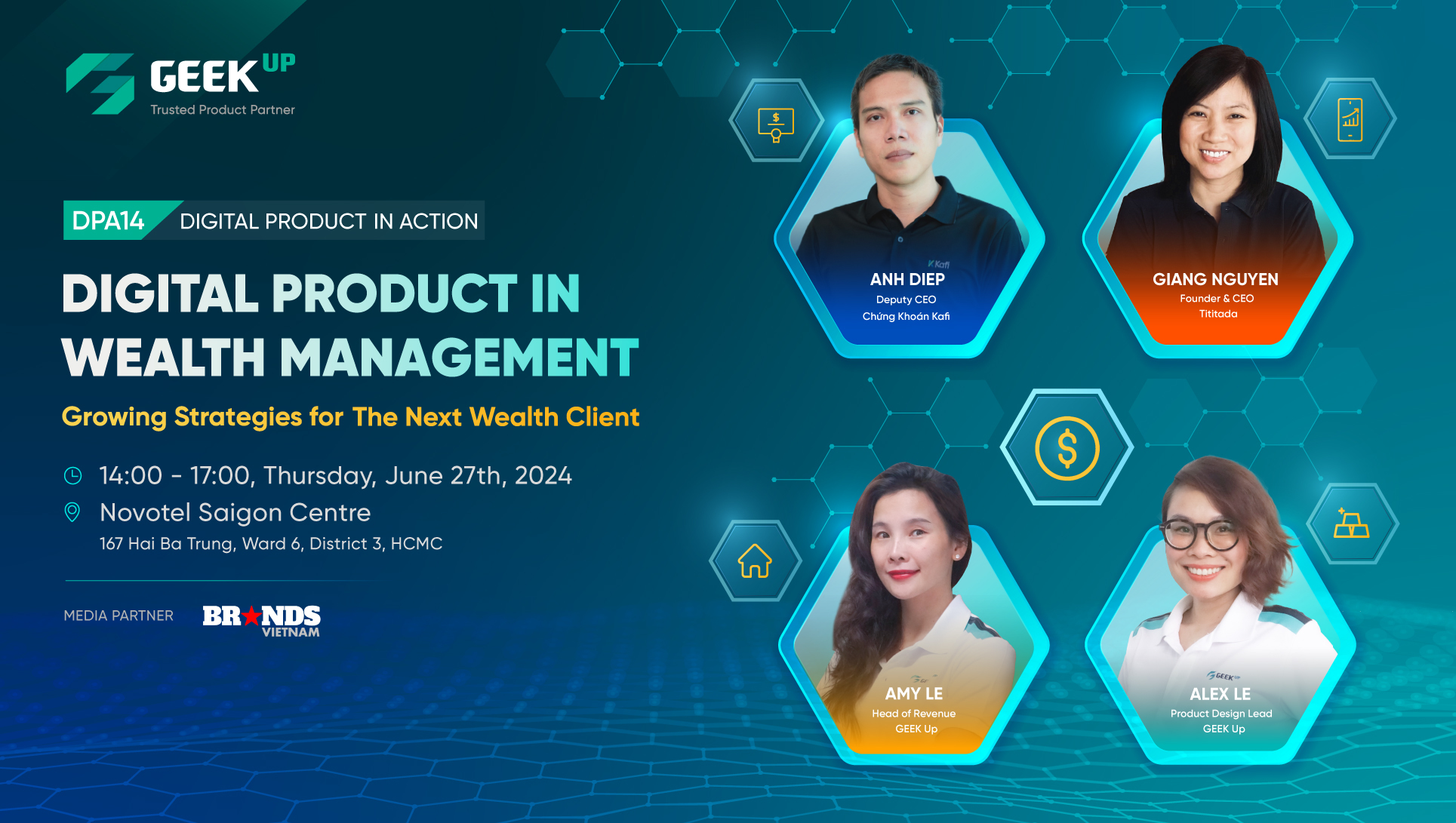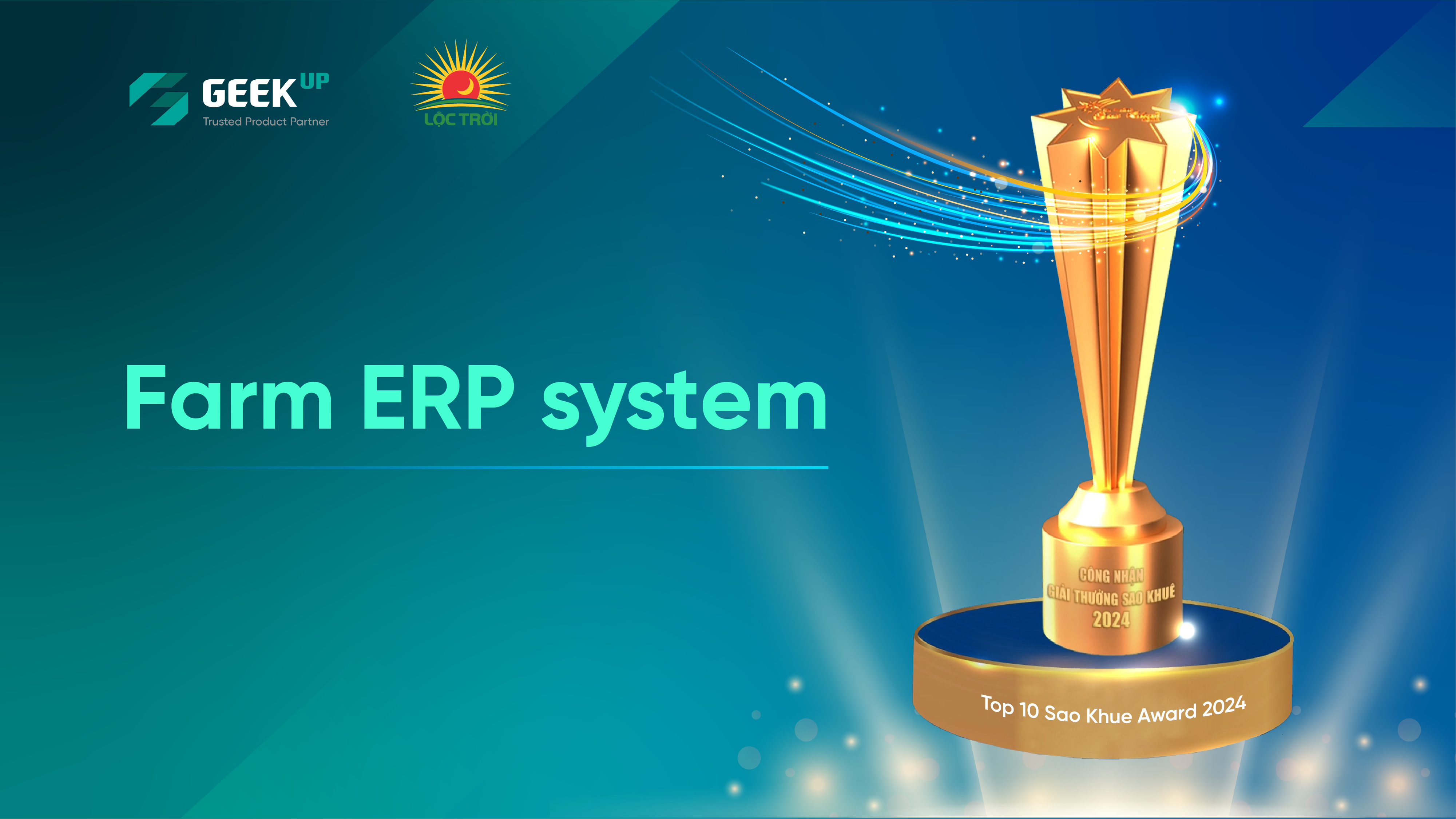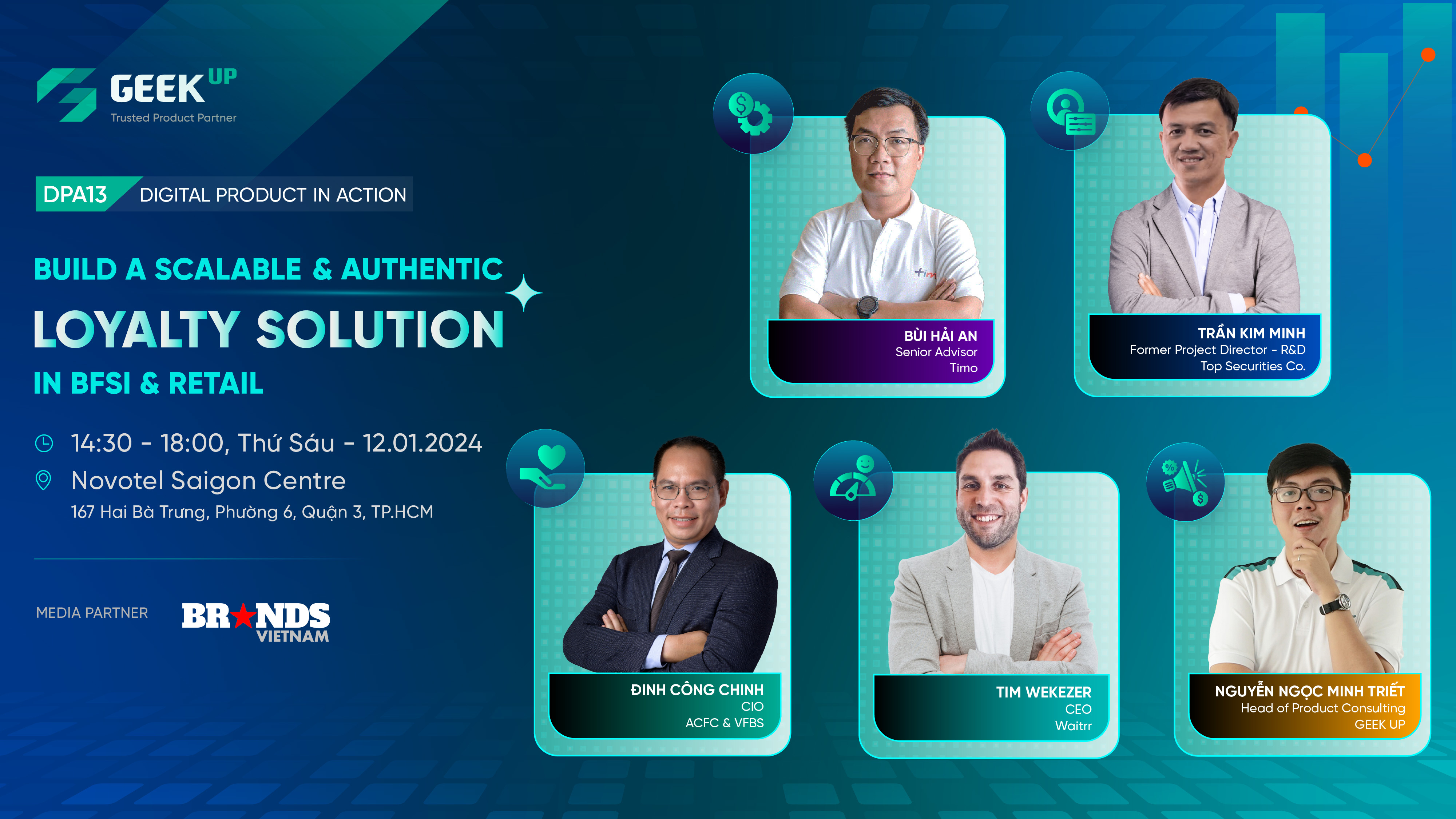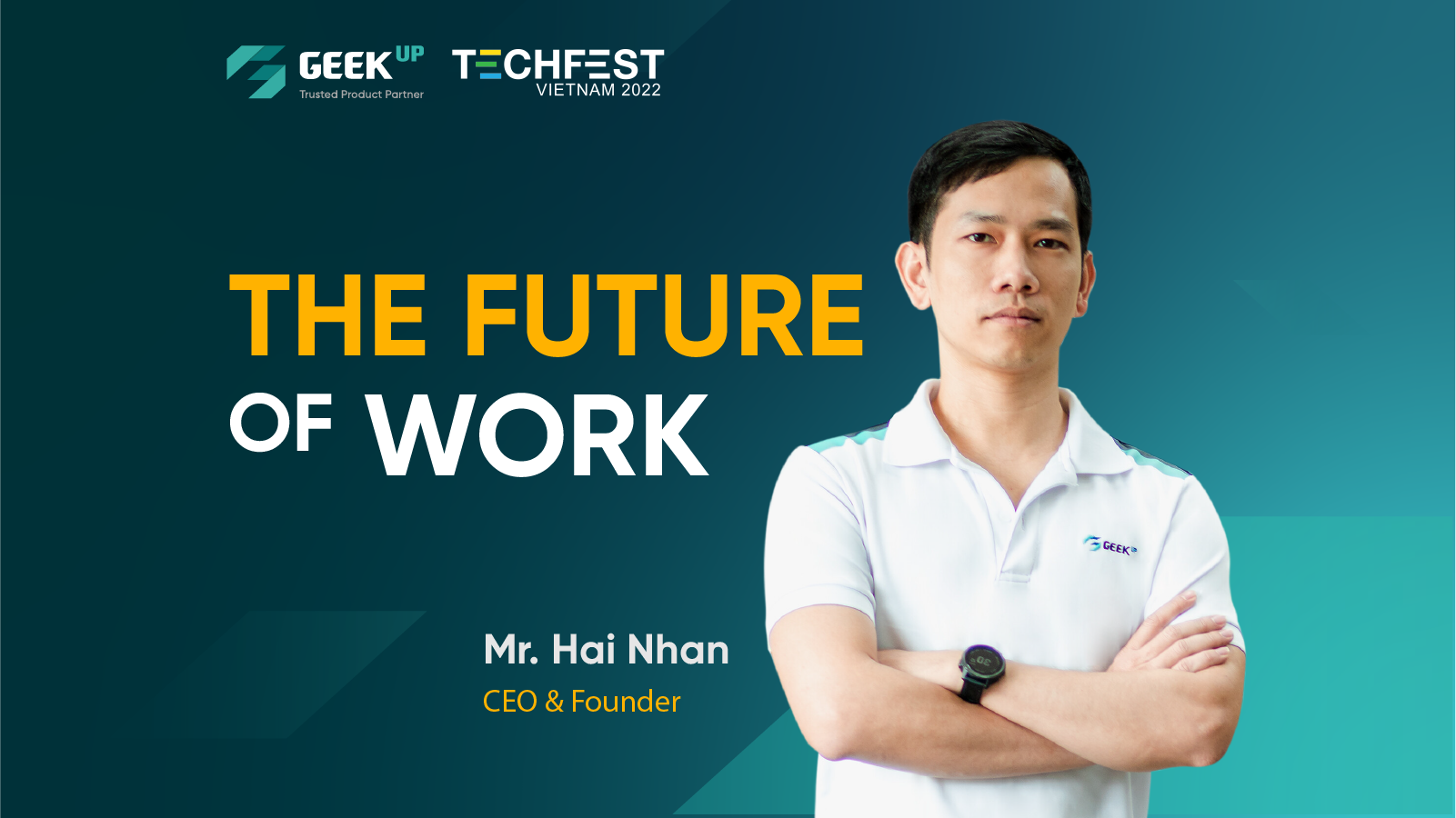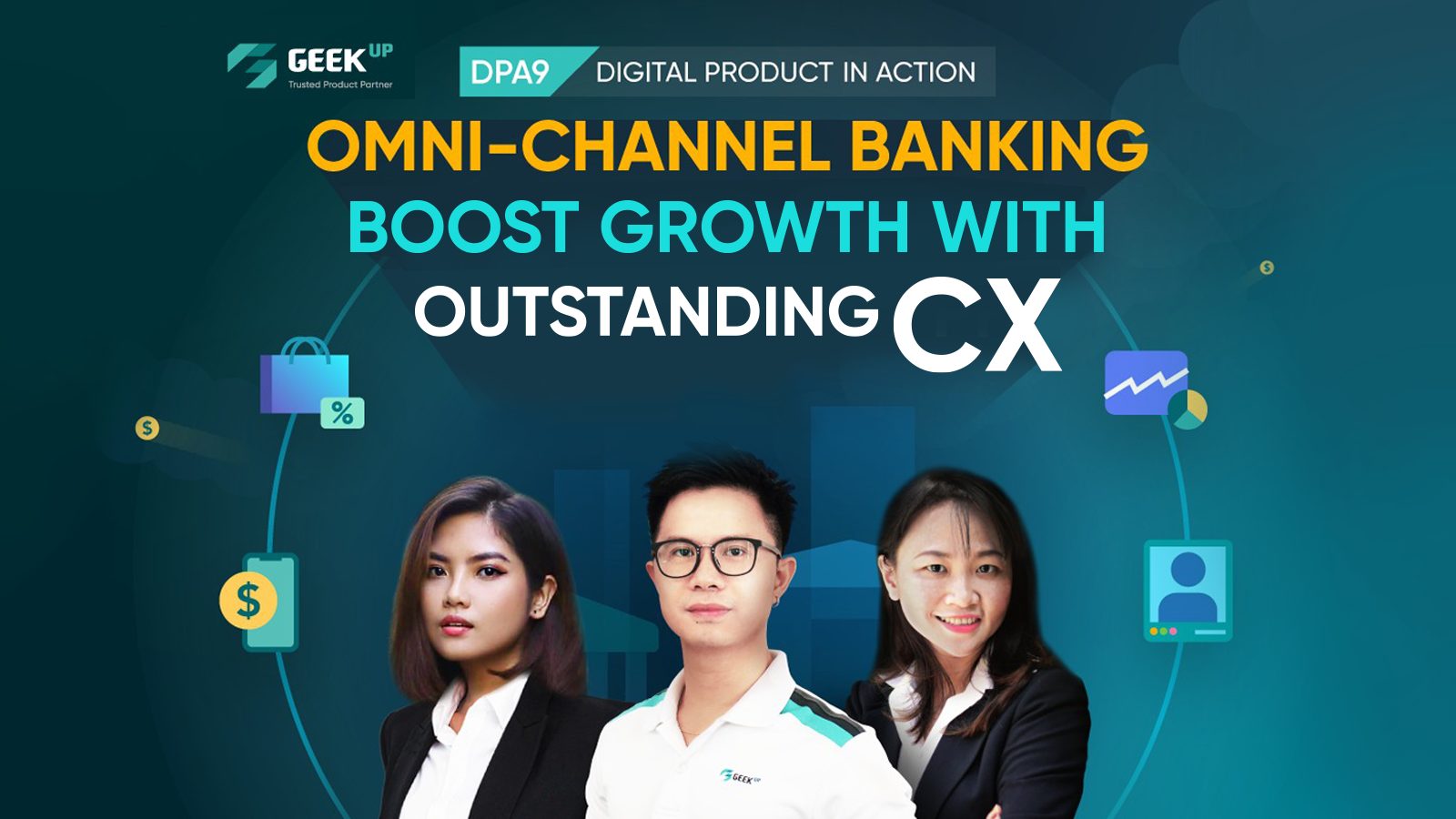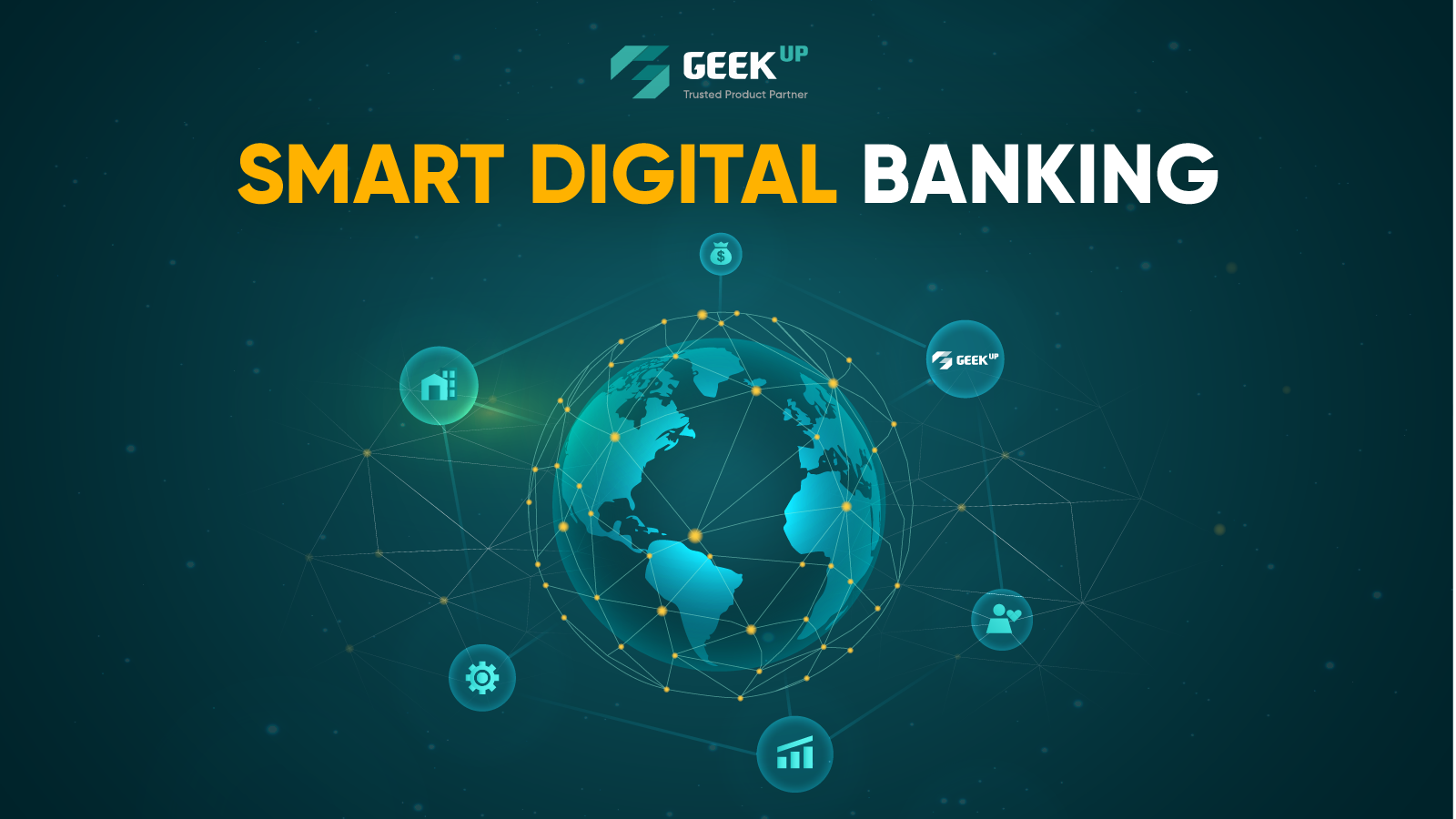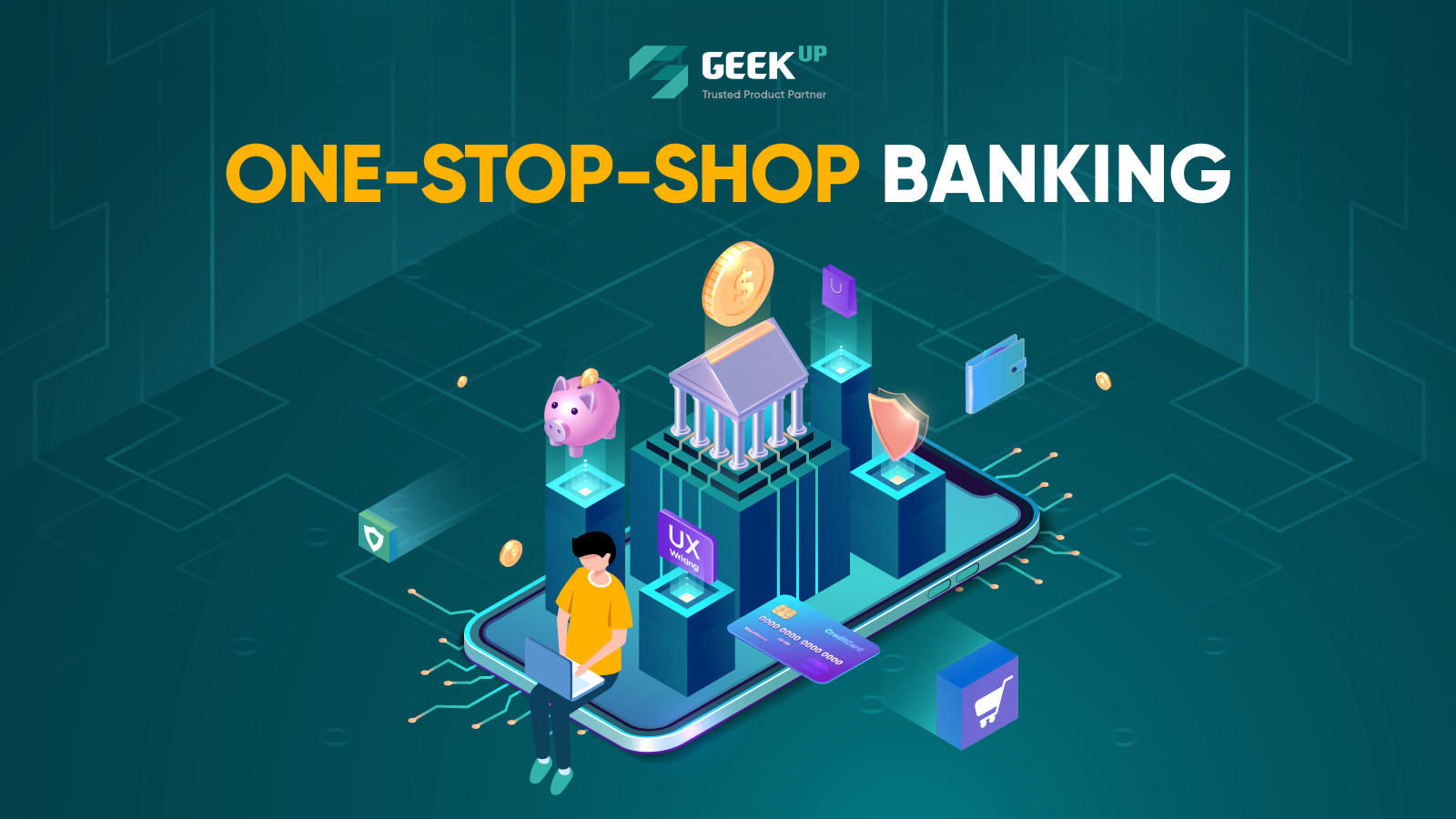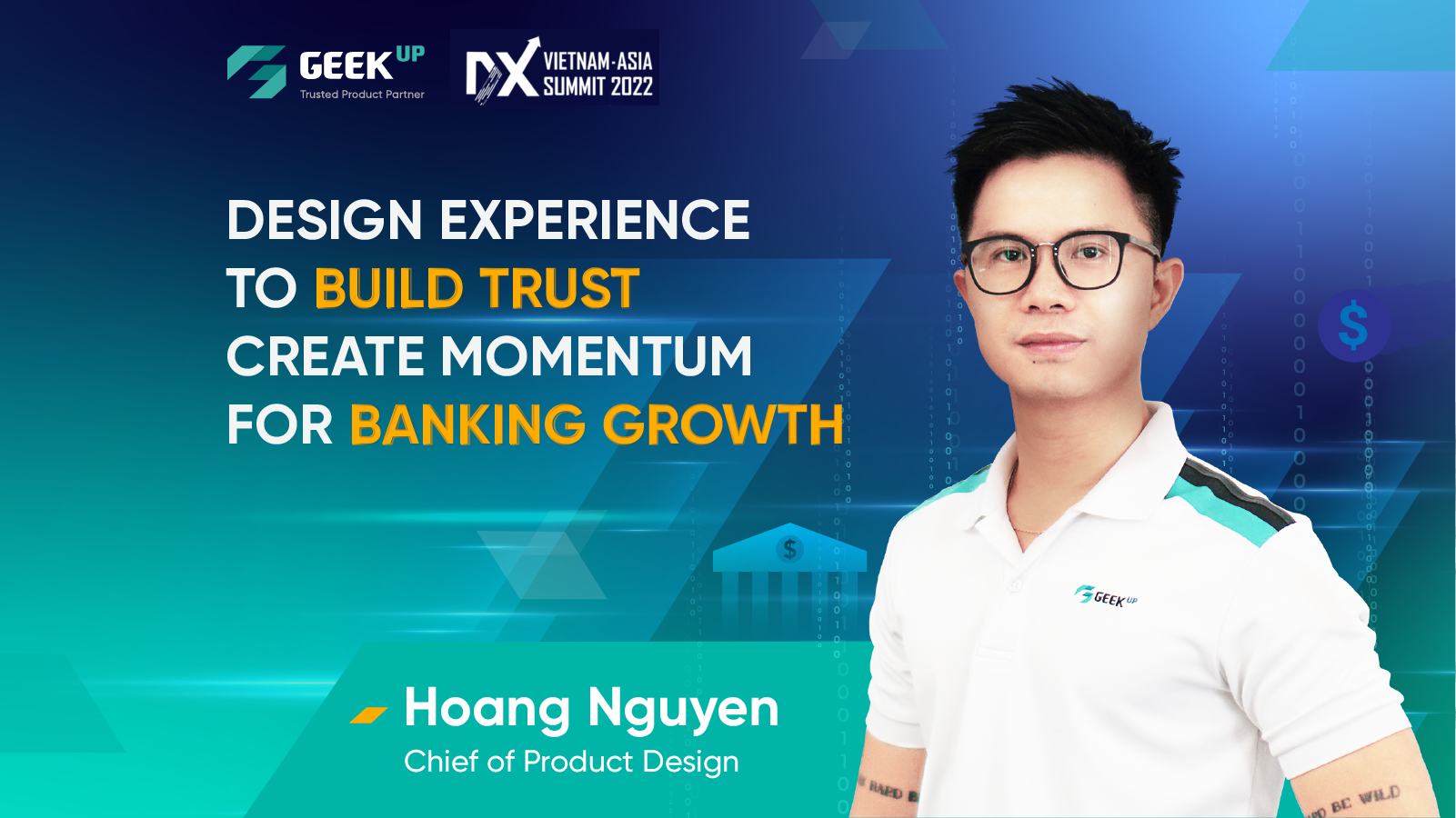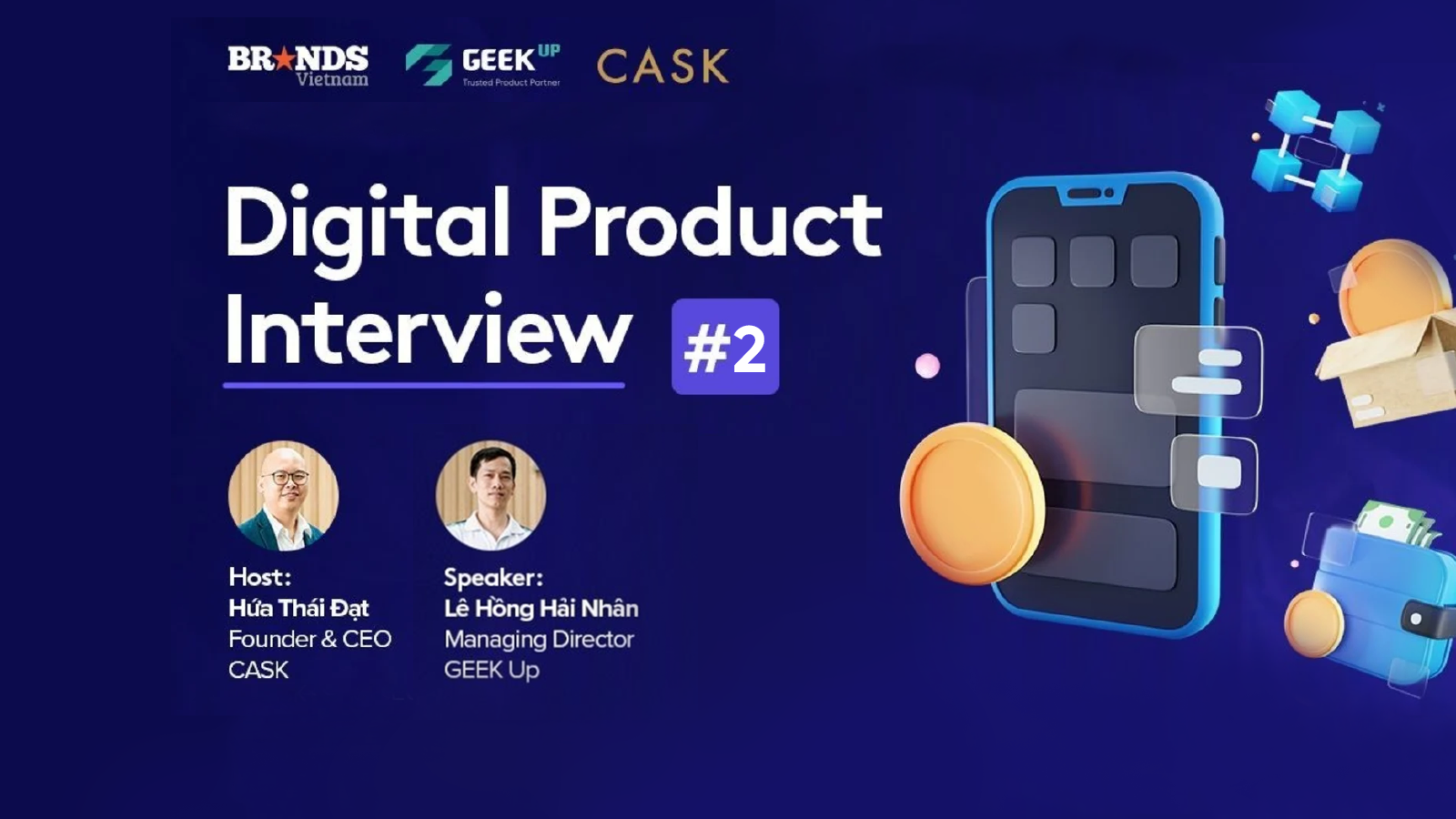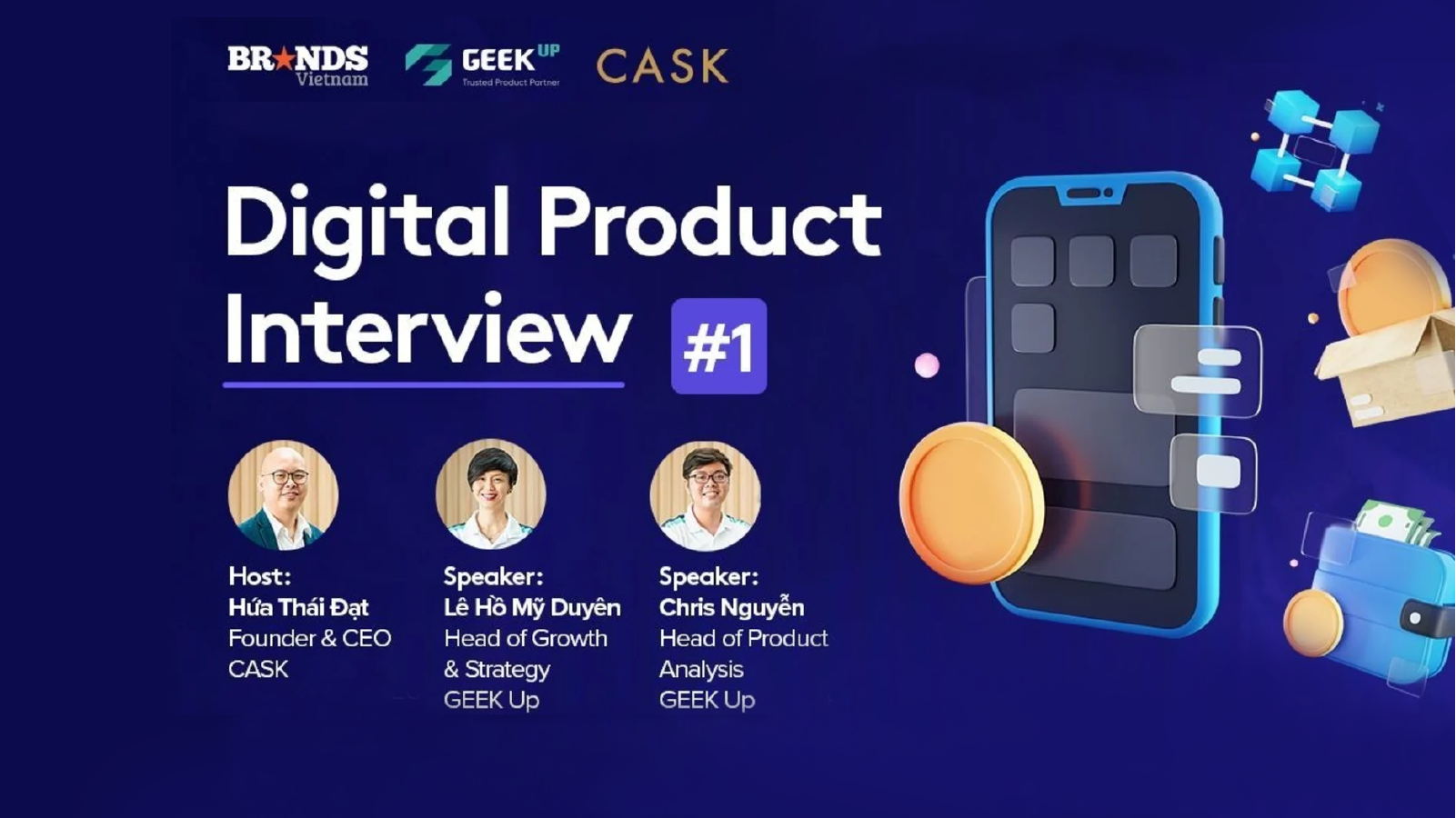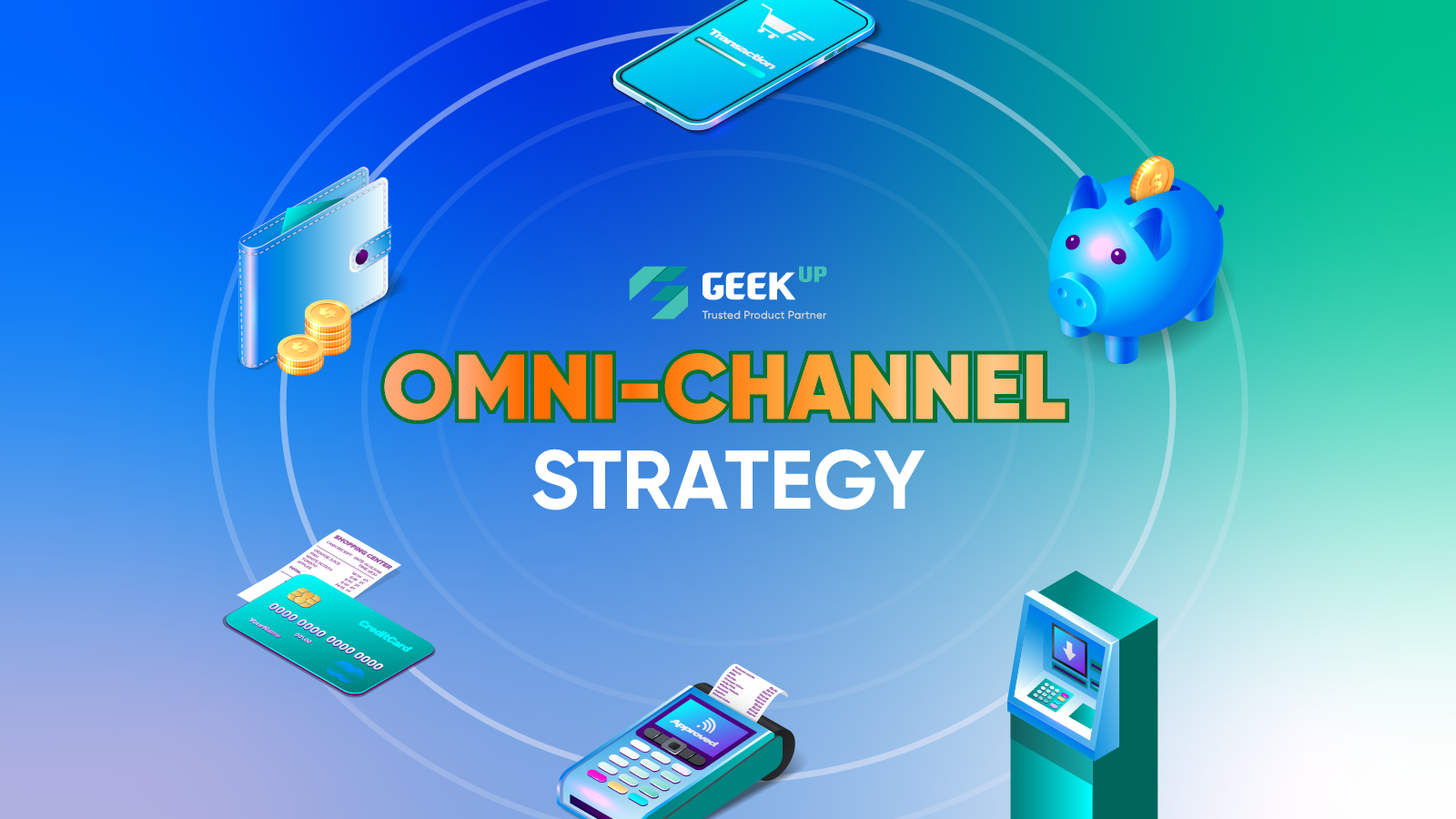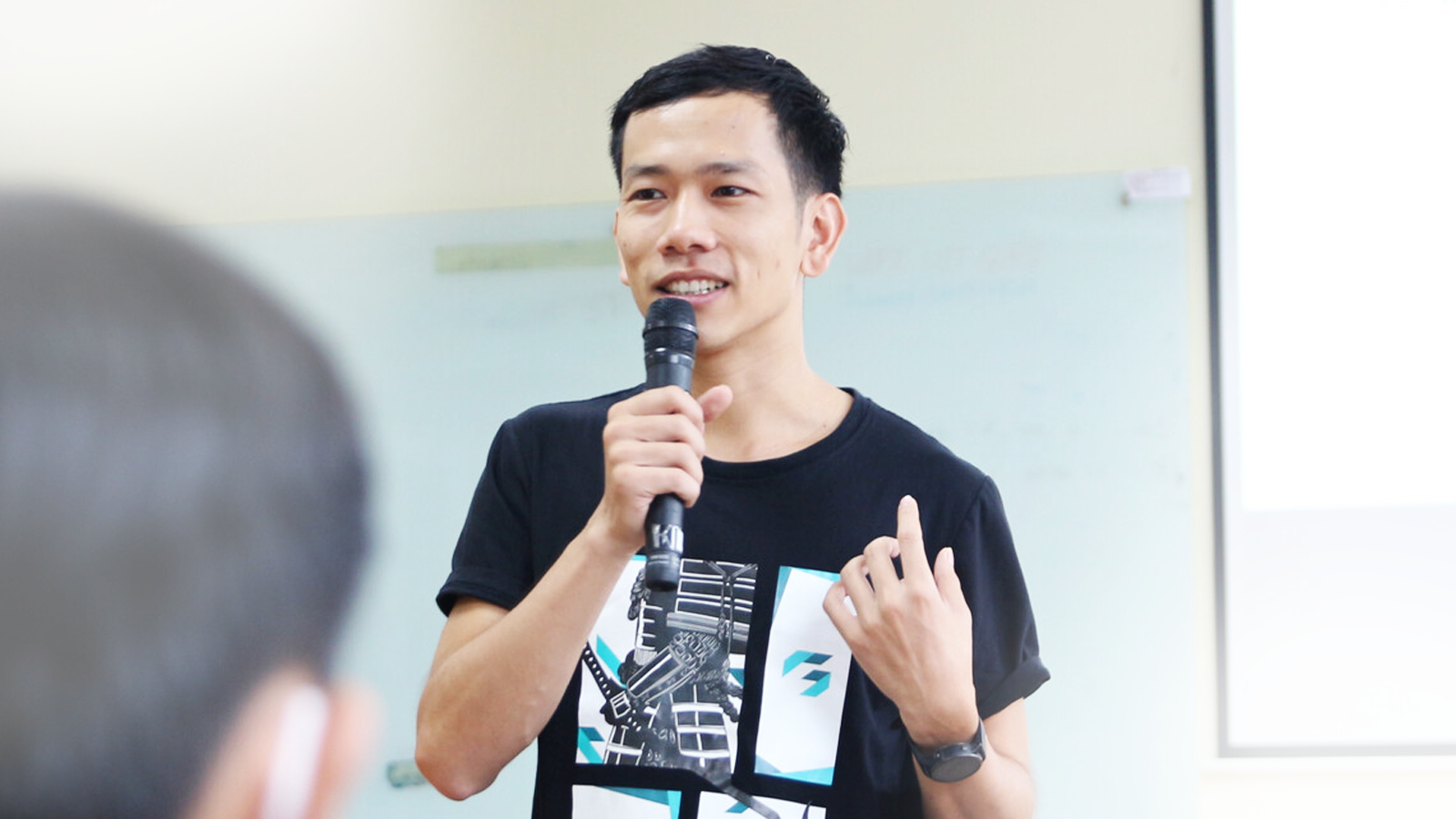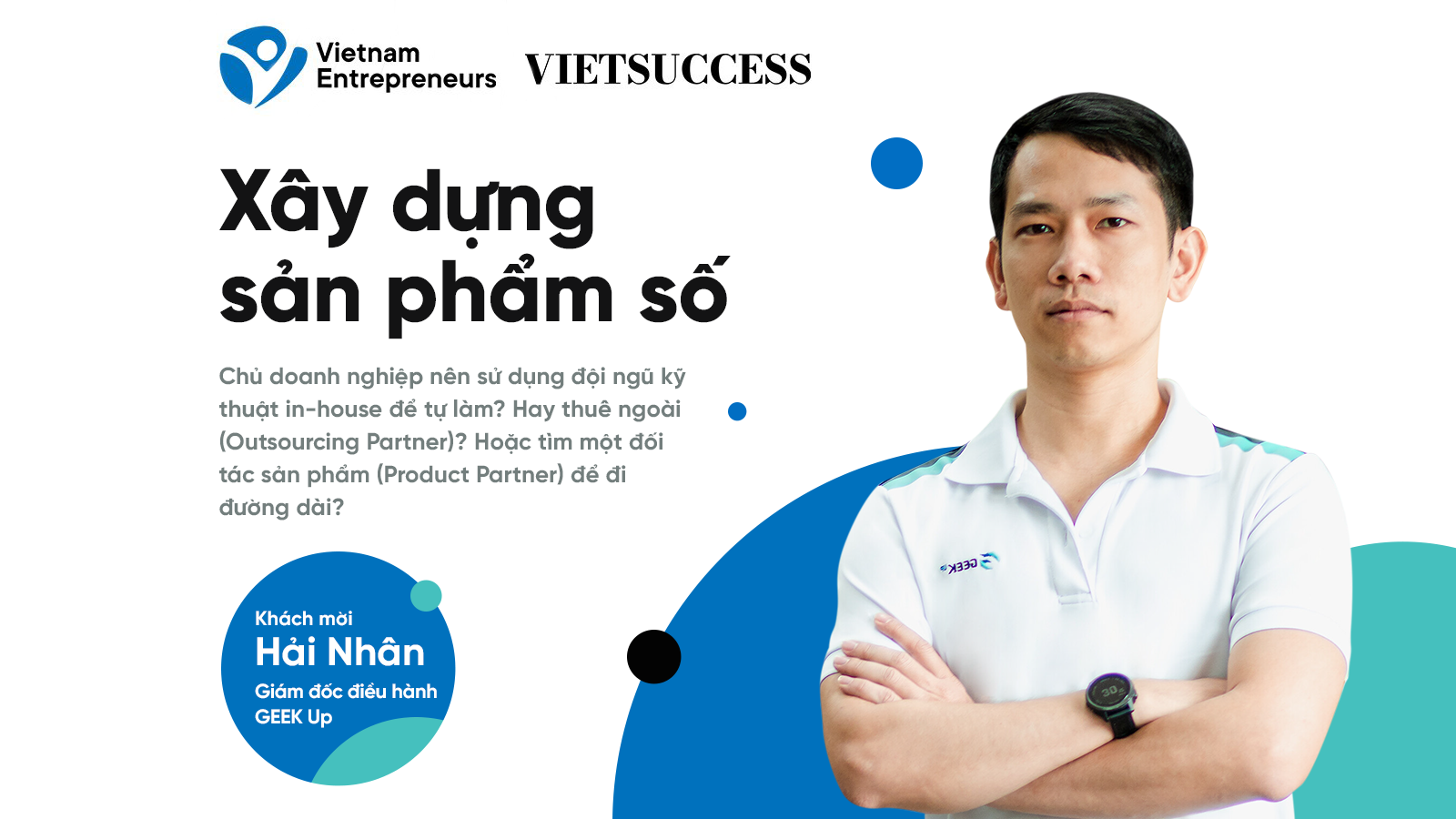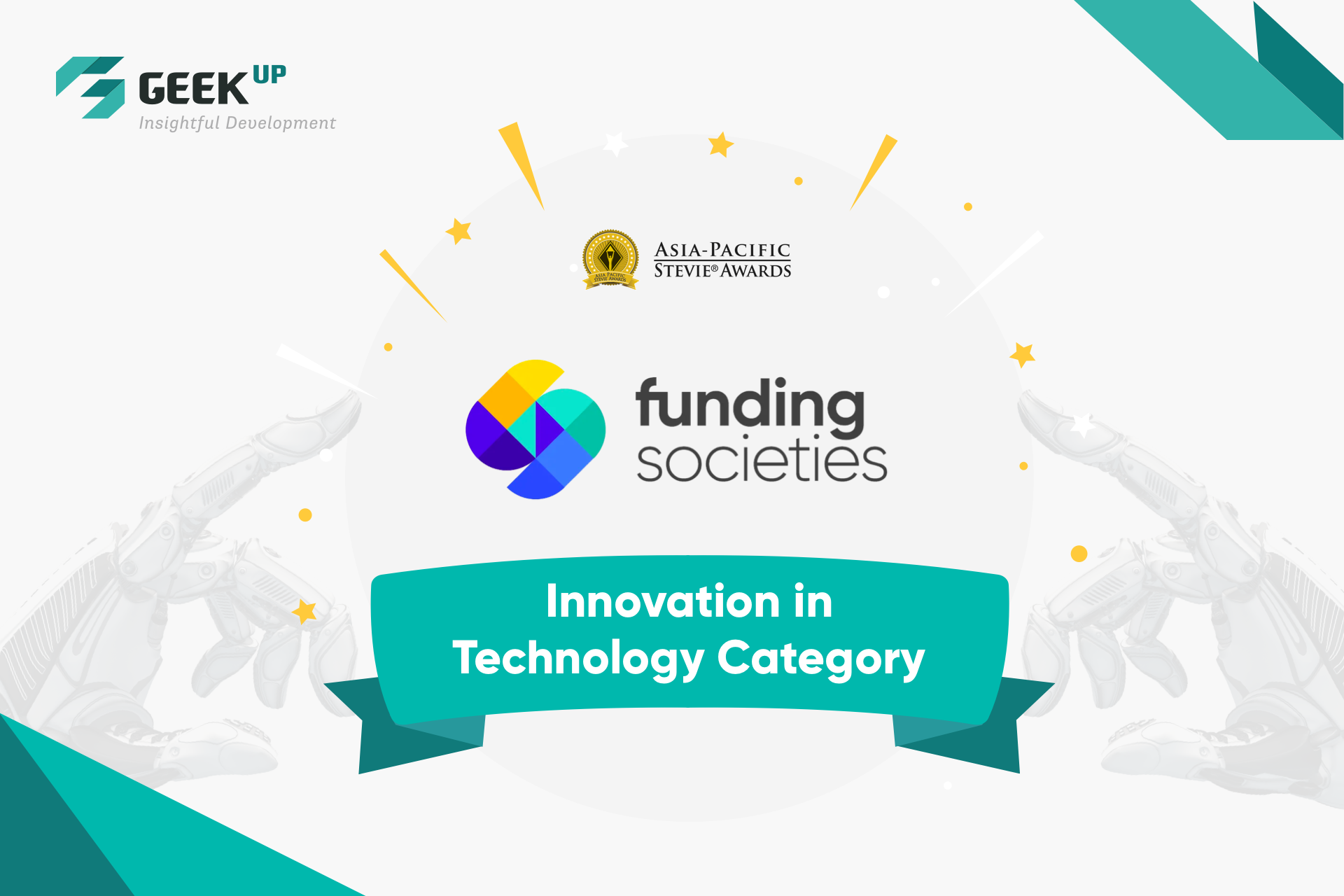September 15, 2021
5 min read
MVP and 3 things to keep in mind when building digital products
We are living in a time when digital products are presented in many fields, markets, and every "nook" of human life. In this context, building digital products is not only about technology, as Steve Jobs once said: “We need to start from the customer experience and then know which technology to apply to the product, not to do it opposite".

In my opinion, a successful and powerful product (Impactful) needs to satisfy 3 factors: (1) Business – the product needs to be consistent with the business strategy and goals; (2) User experience – the product provides a good experience or solves a certain problem for consumers; (3) Technology – in addition to functions, the product also has the ability to coordinate with other operating systems in the enterprise.
Beside, the rise of digital products and market requirements increase the difficulty of the problem for businesses. The solution is found in one of the most popular models today, the Minimum Viable Product (MVP). This concept is popularized by author Eric Ries in "The Lean Startup" (2011). MVP represents the product building that needs to go through each step from building, measuring, evaluating to improving. As a result, the product not only meets a market need, but also makes an impact.
So what exactly is an MVP?
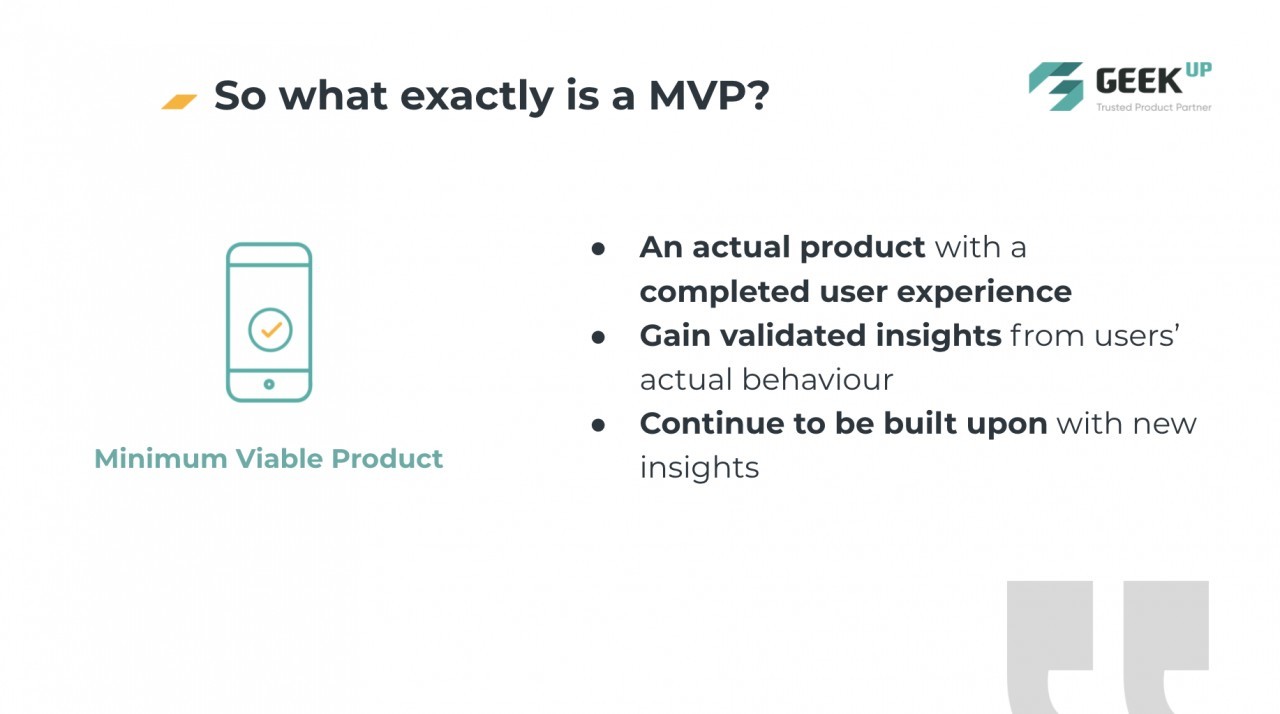
Depending on the perspective, MVP is defined in different ways. For example, businesses often see MVP as a product that can be deployed and start creating values for them. Meanwhile, for Marketers, MVP is a product of clear value, solving problems for users. The Product team defines MVP as the most lean product to hit the market, and is gradually improving based on insights gathered from real-life user experiences. Different perspectives cause difficulties when 3 teams work together to build MVP.
According to Eric Ries, who contributed to popularizing this model, MVP is a version of a new product that allows businesses to collect maximum customer feedback with minimal resources. The key element of MVP is that the real product is experienced in a real environment. Therefore, the MVP must be a very lean product version but still bring a complete user experience to the market. As a result, businesses have accurate information to improve products.
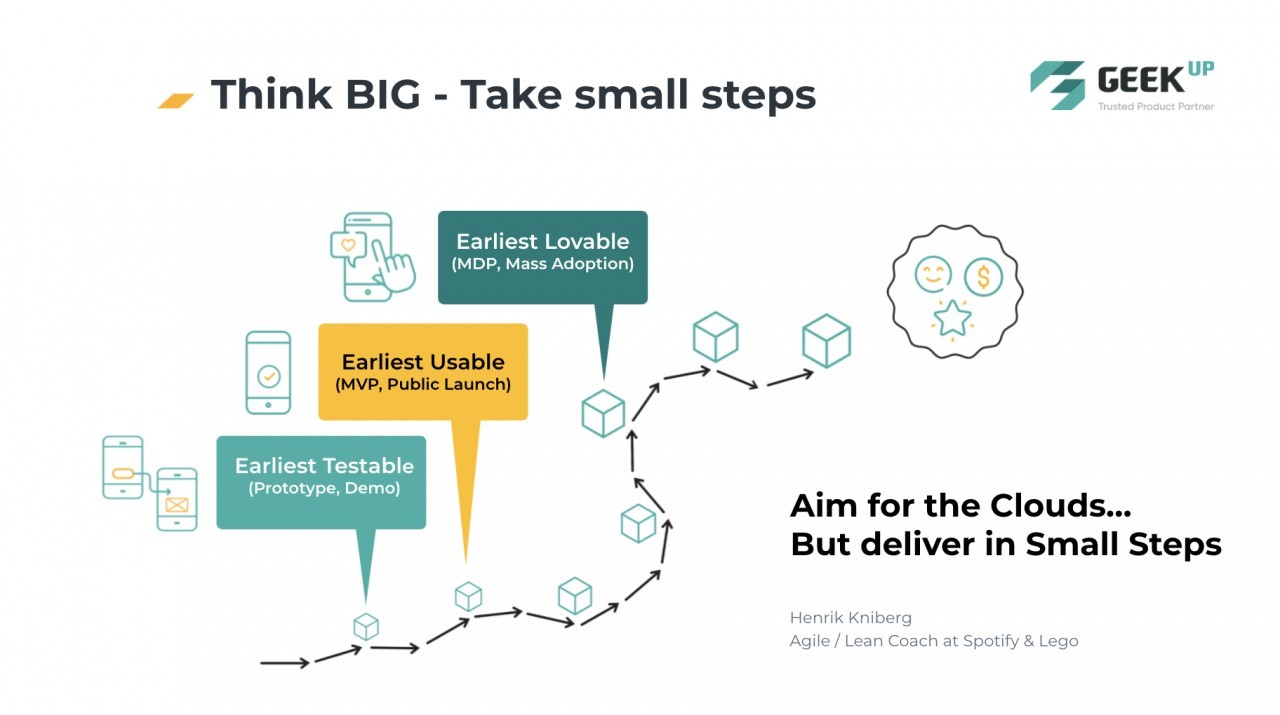
The product development process is divided into 3 phases:
- Testable: these are the earliest stages in which a firm wants to test uncertain assumptions. At this time, businesses can apply quick solutions such as Prototype, Demo
- Usable: this is the stage where the product has enough small and usable functions. Businesses can launch products to the market to gather insights and make further improvements
- Lovable: this is the stage when the product is widely loved and accepted by the market (Mass Adoption)
3 points need to note when building MVP
1. Think big, Take small steps
During the product development process mentioned above, we must always ensure the direction of the Big Vision (long-term goal) of the business. It means that the product not only solves the users' problems but also has to help the organization achieve its business goals, in line with its long-term development strategy.
Right from the beginning of the Feature selection, the Product team needs to pay attention to this distant goal. Without foresight, the team can hardly build the right product. Or if successfully built, the product will not bring value to the business.
For example, from the early days of its establishment, Amazon determined to become a customer-oriented retailer with a strategy of leveraging the power of the Internet. The "big man" technology chose the book to develop the first version of MVP. According to Mr. Jeff Bezos, at that time, books had the largest number of SKUs among retail items with about 3 million copies. However, no bookstore can hold all that huge amount of books. Therefore, building an online bookstore is a suitable product option for Amazon's strategy of taking advantage of the Internet's power.
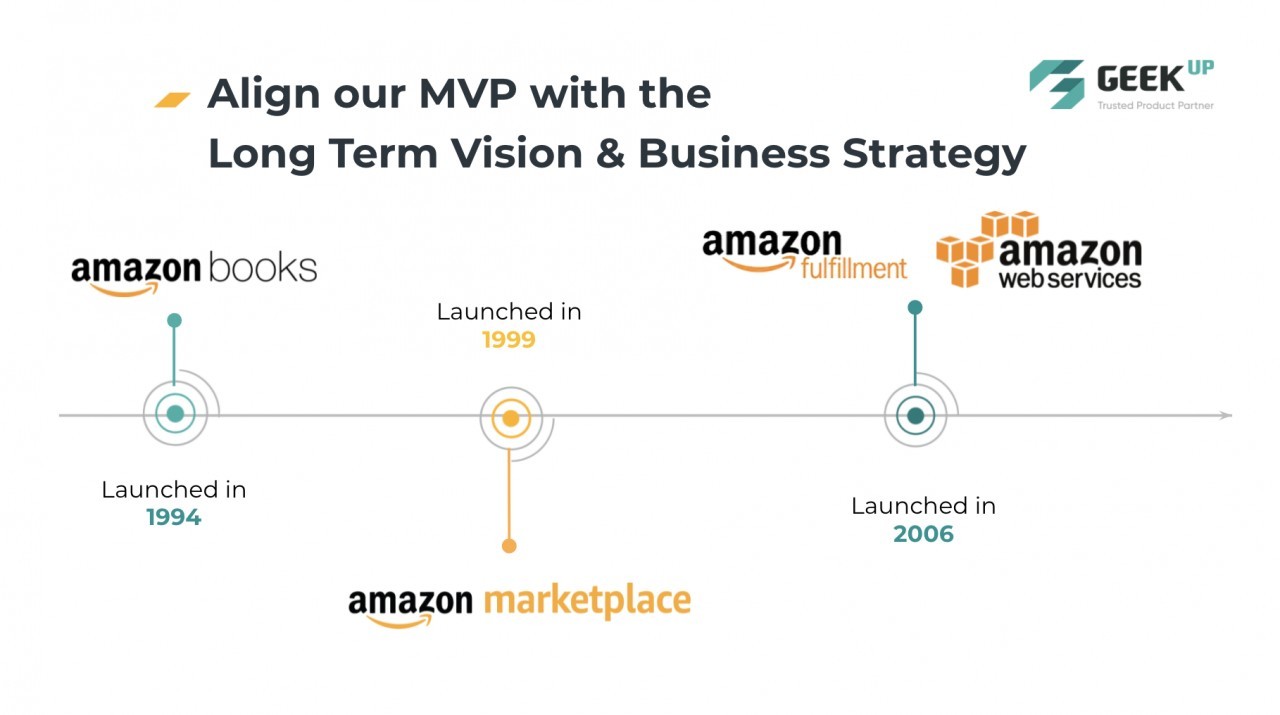
Dựa vào đó, Amazon nhanh chóng triển khai ý tưởng và đạt được những chiến thắng nhỏ liên tiếp. Chúng trở thành cơ sở để Amazon tiếp tục phát triển những sản phẩm mới. Amazon Marketplace được ra mắt năm 1999 chứng minh Amazon đạt được tầm nhìn đề ra ban đầu là “nhà bán lẻ tận dụng năng lực Internet”.
Based on that, Amazon quickly implemented the idea and achieved small victories in a row. They became the basis for Amazon to continuously develop new products. Amazon Marketplace, launched in 1999, proved that Amazon has achieved its original vision of "the retailer that leverages the power of the Internet".
2. Quick win, Focus on core experience
To develop a product according to the MVP model, we need to understand the importance of the product at 3 levels: business, users, and technology. From there, the new team has a foundation to choose the functions that need to be developed to be able to have a very streamlined version of MVP but still provides a complete user experience, which can be released to the market.
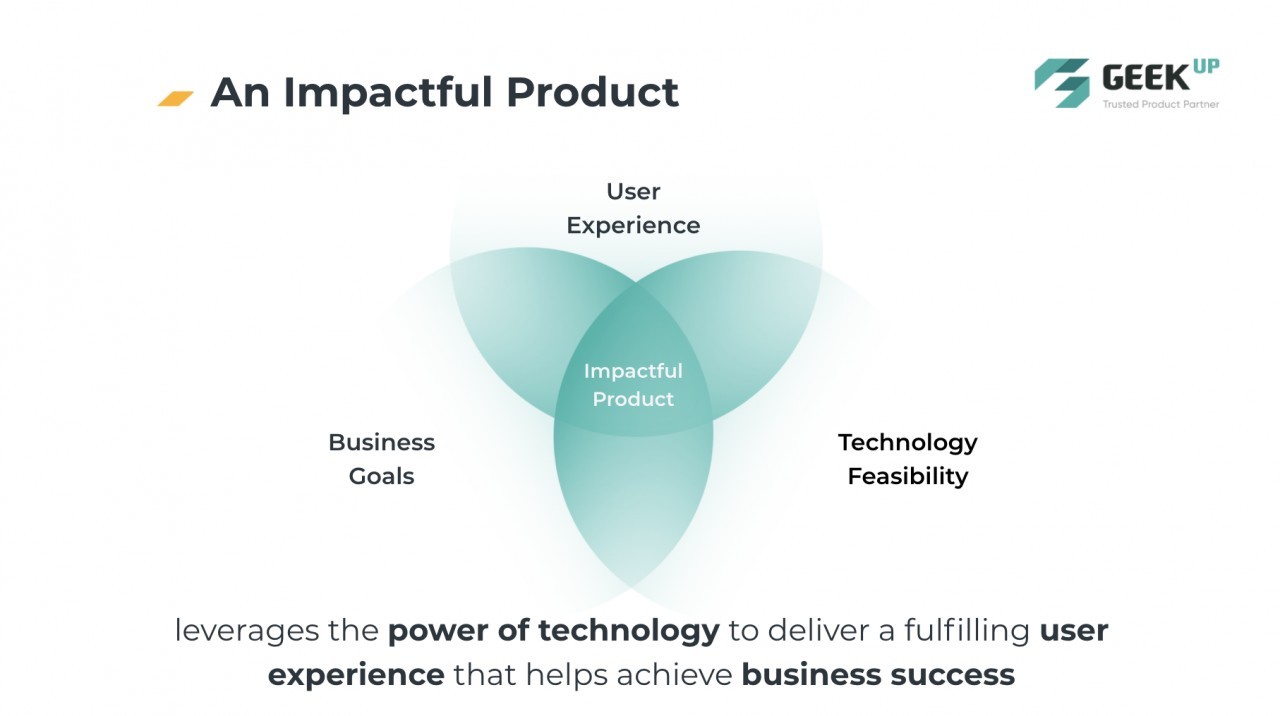
This is an example of Spotify's product development process. 2004 was the period when iTunes "stormed". iTunes was then one of Apple's main products, allowing users to buy music and albums online. At that time, the Spotify team discovered:
- Users are still satisfied with streaming music instead of owning the music
- Producers and musicians accept music streaming for listeners as long as they have income from it
- Technologically, it is possible to build a streaming platform. (In 2004, streaming was still a new technology and there were not many successful case studies.)
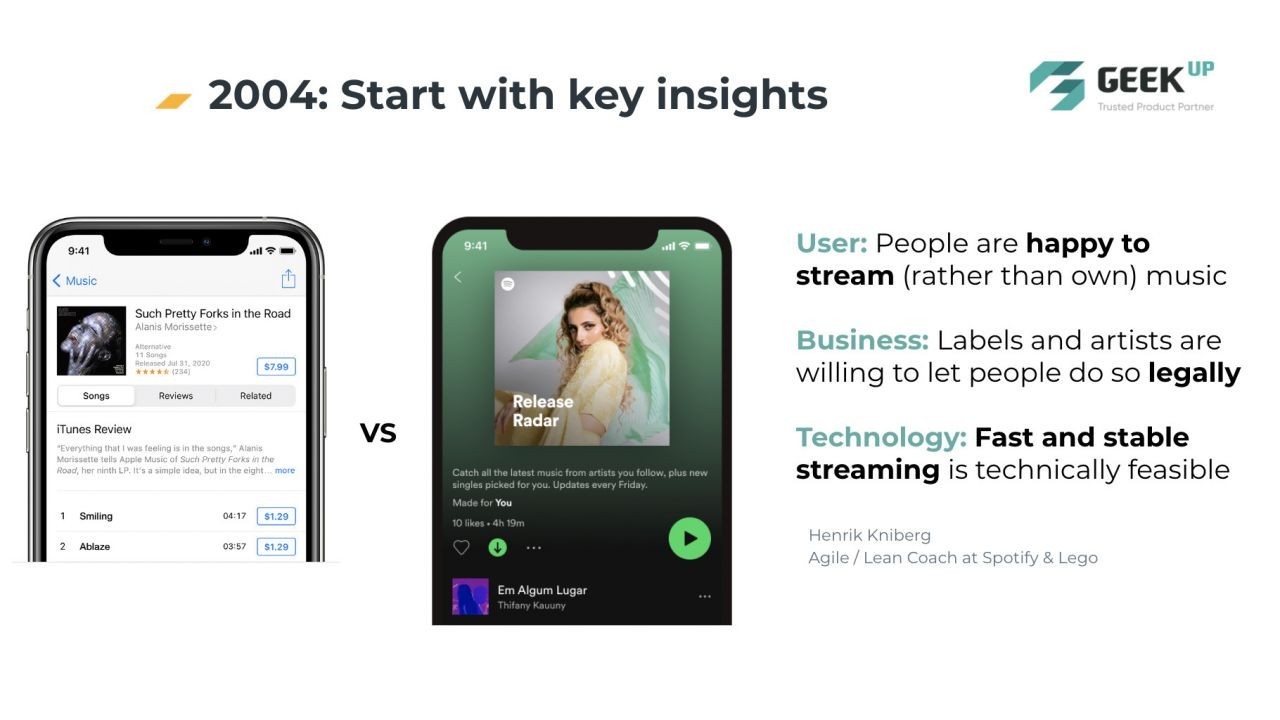
In the above 3 insights, the streaming technology platform was an important assumption and needs to be tested. Therefore, Spotify decided to build a Technical Prototype, to allow users to stream music based on existing playlists. During testing, Spotify found that the listening experience on the platform must be smooth to be accepted by users. Therefore, they have focused on spending a lot of time on improving latency to bring a great streaming/music listening experience to users.

Because of deeply understanding users' insights, Spotify quickly got a "quick win" when launching the platform in 2006. After about 3 years, Spotify "attacked" the European market (2009), and then the Americas. (2011).
3. Be ready to scale up
The third story is related to the preparation of resources for the long way to build the product. Without adequate preparation, businesses will easily lack resources in the middle of the product-making process. This affects the level of product improvement as well as the loss of trust of the internal team and partners.
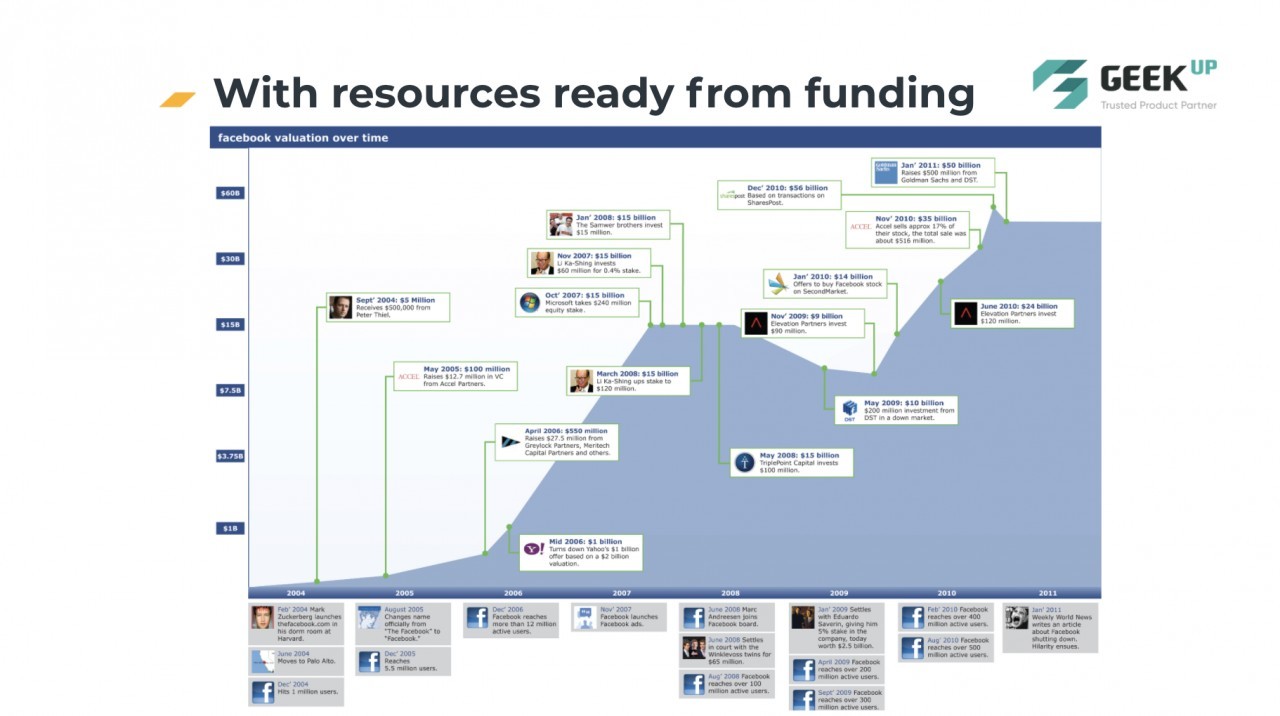
Behind Facebook's success, for example, are years of resource preparation. From 2007-2009, Facebook focused on raising capital so that when the product launched and achieved the desired results, they only needed to focus on product development. Also during this period, they not only improved the user experience, but also invested in building the Facebook Ads function - the first system to help Facebook generate income. Because of the careful preparation of products and resources, Facebook Ads was quickly launched and achieved success. This milestone contributed a lot to the success of Facebook when the company IPO on NASDAQ in 2012.
Building a product is a long road. The process becomes more difficult in the context of a fiercely competitive market. So, in order to build a successful product and make an impact, I think businesses need to ensure: (1) aiming for long-term goals; (2) understanding insights can select functions for MVP that are streamlined but still provide a complete user experience; (3) careful preparation in terms of resources.
Author: Chris Nguyễn | Product Analysis Coach @ GEEK Up
Source: brandsvietnam.com
3 likes
Get latest updates from GEEK Up
Our email packed with digital product insights, trends and case studies.

